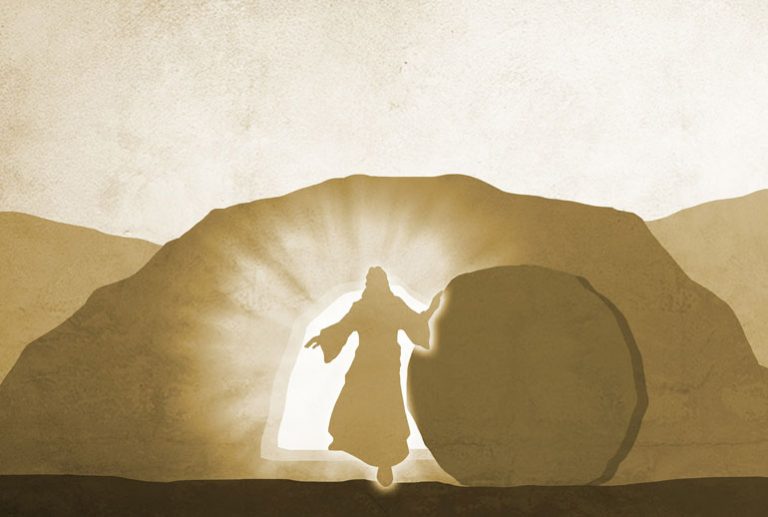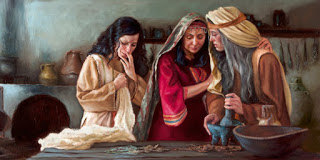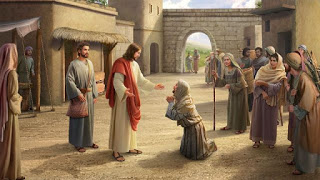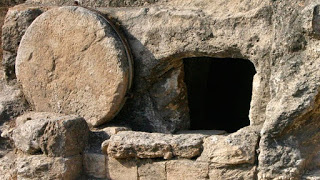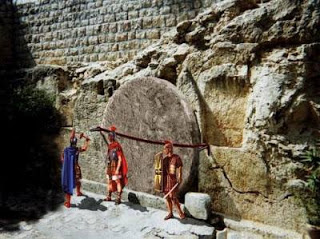William Jordan, a retired sergeant of the Los Angeles Police Department, was one of the officers assigned to investigate the assassination of Senator Robert Francis Kennedy, commonly known as Bobby Kennedy. The tragic event occurred in the early morning hours of June 5, 1968, just after Kennedy had delivered his victory speech following his win in the California Democratic primary.
In an interview aired on the History Channel, Sergeant Jordan recalled that one of the greatest challenges of the investigation was the sheer number of witnesses present. There were hundreds of eyewitnesses, and every one of them offered a different version of what had occurred. All of them had heard the shots that fatally wounded the Senator from New York, and many even claimed to have seen the assailant. Yet each account included a multitude of conflicting details, many of which turned out to be irrelevant.
Still, because of the high profile of the victim, every testimony had to be recorded and considered. The investigative team was required to treat each account with seriousness, even when contradictions emerged, as each person’s perspective was shaped by their vantage point and emotional state during the chaos.
Importantly, the existence of differing versions of the same event does not mean that the witnesses were lying. On the contrary, such variation is normal and expected in eyewitness testimony. In fact, a judge would become suspicious if every witness gave the same account, down to the smallest details. That kind of uniformity would suggest collusion, not honesty.
Human beings perceive and remember events through unique lenses, especially when the moment carries a high emotional charge. It is precisely this diversity of accounts that gives credibility to the overall narrative. If all the witnesses had told an identical story, it would more likely have indicated that they had coordinated their testimonies, thereby intentionally misleading the investigation.
The resurrection of Jesus is narrated by all four evangelists—Matthew, Mark, Luke, and John. Each Gospel provides unique details that the others do not include, allowing us to construct a fuller and more vivid picture of this monumental event. Given the nature of eyewitness testimony and differing perspectives, it is neither expected nor necessary for the accounts to be identical. As previously noted, such variation is characteristic of truthful narratives rather than coordinated fabrications.
Despite the differences in detail, the core facts remain consistent across all four Gospels: Jesus’ tomb was found empty, He had risen, and He appeared to His followers. This convergence of essential truths across independent sources offers strong grounds for confidence in the historical credibility and theological authenticity of their testimony.
The resurrection narratives begin at dawn on the first day of the week. A group of women—among them Mary Magdalene—goes to the tomb with the intention of completing the anointing rituals that could not be finished before the Sabbath. However, upon arriving, they found the stone rolled away and the tomb empty.
At that moment, angels appear to the women and announce that Jesus has risen from the dead. The women are overcome with a mixture of fear and joy, astonished by what they have witnessed and heard. The chronology of the events that follow becomes difficult to pinpoint with precision—an expected feature of multiple independent eyewitness reports. However, a general sequence can be discerned.
Mary Magdalene, running ahead of the other women, goes to inform Peter and John of what she believes is the disappearance of the Master’s body. The two apostles, along with Mary, hurry to the tomb. John arrives first, but it is Peter who enters. They found only the linen clothes, and the tomb empty, just as Mary had said. Deeply moved and perplexed, they returned home, still unsure of what to make of it all.
Left behind, Mary Magdalene remains near the tomb, weeping. It is then that Jesus appears to her, though at first, she does not recognize Him. Upon realizing it is the Risen Lord, she becomes the first recorded witness of the resurrection. Shortly after this, Jesus also appears to the other women, who are on their way to inform the disciples of what they had seen and heard at the tomb.
And yet, in a striking detail shared across the Gospels, the disciples do not believe them. Their words seemed, as Luke recounts, “like nonsense” to the men (cf. Luke 24:11). This skepticism only underscores the unexpected nature of the resurrection, and paradoxically, it lends credibility to the accounts. If the evangelists were inventing a story, they would be unlikely to portray the apostles—future leaders of the Church—as doubtful and slow to believe.
There is no detailed biblical record of the personal encounter between Jesus and Peter on the day of the resurrection. The only explicit reference comes from Paul, who, in listing the appearances of the Risen Lord, briefly states: “And that He appeared to Cephas, and then to the Twelve.” (1 Corinthians 15:5).
This sparse mention leaves the nature of that meeting to our imagination, yet its inclusion in Paul’s list—and its quiet acknowledgment by the other disciples—indicates that it held deep significance for Peter.
The Gospel of Luke also alludes to this appearance indirectly. When Cleopas and his companion return from their encounter with the Risen Christ on the road to Emmaus, the other disciples greet them with these words: “The Lord has truly been raised and has appeared to Simon!” (Luke 24:34).
Following this, Jesus appears to the rest of the apostles, although Thomas is notably absent during this first encounter (John 20:24). The four Gospels, when considered together can be arranged into a probable chronological sequence, as follows:
- The stone is rolled away from the tomb (Matthew 28:2–4)
- Several women arrive at the tomb (Mark 16:1–4; Matthew 28:1; Luke 24:1–3; John 20:1)
- Angels announce the resurrection to the women (Mark 16:5–7; Matthew 28:5–7)
- The angels remind the women of Jesus’ prophecy (Luke 24:4–8)
- The women flee the tomb, trembling and astonished (Mark 16:8)
- Mary Magdalene informs Peter and John (John 20:2)
- Peter and John run to the tomb and examine it (John 20:3–10; Luke 24:12)
- Jesus appears to Mary Magdalene (Mark 16:9; John 20:11–17)
- Jesus appears to the other women as they return from the tomb (Matthew 28:8–10)
- The guards report the event to the chief priests, who devise a cover-up (Matthew 28:11–15)
- The women tell the disciples what they witnessed (Luke 24:9–11; Mark 16:10–11; John 20:18)
- Jesus appears to Peter (Cephas) (Luke 24:34; 1 Corinthians 15:5)
- Jesus appears to Cleopas and another disciple on the road to Emmaus (Luke 24:13–27; Mark 16:12)
- Jesus reveals Himself to them in the breaking of the bread (Luke 24:28–32)
- Cleopas and his companion return to Jerusalem and recount their encounter (Luke 24:33–35; cf. John 20:19; Mark 16:13)
- Jesus appears to the gathered disciples (without Thomas) (Luke 24:36–44; John 20:19–20; Mark 16:14)
While it is entirely reasonable to expect certain differences among the resurrection narratives, a casual or unfamiliar reader might interpret these differences as contradictions, even suspecting one or more of the evangelists of error or fabrication. This concern, however, is misplaced. With careful reading and logical reasoning, these apparent discrepancies can be reconciled in ways that enhance the credibility of the accounts rather than diminish it.
Let us consider one example: the number of angels present at the tomb. In Matthew 28:2–7, the evangelist refers to a single angel, while Luke 24:4–7 mentions two angels. This seems inconsistent. But a closer look reveals that Matthew does not say there was only one angel; he simply chooses to focus on one—possibly because only one of the angels spoke, or because he wished to emphasize that particular figure’s role. Luke, on the other hand, offers a fuller description by noting that two men in dazzling garments appeared.
There is no contradiction here—only a difference in emphasis. If there were two angels, it is perfectly reasonable for one narrator to highlight only the speaking angel, especially in a moment of high theological symbolism and dramatic intensity. As with modern eyewitnesses, each evangelist recorded what stood out most to him or to the community he wrote for, without denying the fuller context.
Another commonly cited difference involves the earthquake described in Matthew’s account: “Suddenly there was a great earthquake, for an angel of the Lord descended from heaven and coming to the tomb, rolled back the stone and sat on it.” (Matthew 28:2,).
None of the other evangelists—Mark, Luke, or John—mention this earthquake. Does that mean Matthew invented it? Not at all. The absence of a detail in another account does not imply fabrication. It simply means that the other writers chose to leave it out, likely because their focus was directed toward other theological or narrative elements.
In 2012, Spanish journalist Pepe Rodríguez, a well-known critic of the Catholic Church, published a provocative book titled Fundamental Lies of the Catholic Church. The book became a commercial success, resonating with many readers who were skeptical of Christian belief, especially the resurrection of Jesus. In his work, Rodríguez systematically challenges the Gospel accounts of the resurrection, pointing to what he calls contradictions among the four narratives and using them to argue that the resurrection is a fabricated story. Based on these claims, he concludes that the event never happened and that the Gospel testimonies cannot be trusted.
Unfortunately, many readers accepted his conclusions without a deeper examination of the nature of eyewitness testimony, the purpose of the Gospels, or the contextual coherence of the resurrection narratives. His critique relies on the assumption that any difference between Gospel accounts is a contradiction—an assumption that is both historically naïve and logically flawed.
However, as we have seen in the previous examples, the so-called discrepancies—such as the number of angels at the tomb or the mention of the earthquake—are not contradictions at all. Rather, there are variations in emphasis and detail, which are not only natural but expected in authentic accounts of profound, emotionally charged events. Eyewitnesses often highlight different aspects of the same event based on their perspective, memory, and the message they seek to convey.
Another compelling reason to trust in the credibility of the evangelists’ accounts lies in a detail they could never have fabricated convincingly: the mysterious transformation of Jesus’ resurrected body.
Let me explain. Prior to His Passion and resurrection, the Gospels record three resurrections performed by Jesus in the presence of His disciples:
- The resurrection of Lazarus, His close friend (John 11:1–44)
- The raising of the widow of Nain’s only son (Luke 7:11–17)
- The resurrection of Jairus’ daughter, the child of a synagogue leader (Matthew 9:18–25; Mark 5:21–43)
In each of these cases, the person who had died returned exactly as they had been before death. Their friends and family immediately recognized them, and life resumed as before. These were miraculous restorations, but they were resurrections to mortal life—the individuals would live again, but still age and eventually die once more. The disciples, having witnessed these events, naturally formed a conceptual framework: resurrection meant the return of life to a lifeless body, with no change in identity, form, or appearance.
If the evangelists were inventing or embellishing the resurrection of Jesus, it would have made sense for them to model it on what they already knew: the familiar pattern of recognizable resurrections. But that is not what they record. Instead, we are told again and again that those who encountered the risen Jesus did not immediately recognize Him—despite the clear evidence that it was truly His body, complete with the wounds from His crucifixion.
Consider: In the garden outside the tomb, Mary Magdalene sees Jesus and mistakes Him for the gardener: “She turned around and saw Jesus standing there, but she did not recognize that it was Jesus.” (John 20:14). On the road to Emmaus, Cleopas and another disciple walk and talk with Jesus, yet do not recognize Him until He breaks bread with them: “But their eyes were kept from recognizing him.” (Luke 24:16). By the Sea of Tiberias, Jesus appears to seven disciples, speaks with them, and even gives fishing instructions, but again, they do not know it is Him until a moment of recognition dawns: “Then the disciple whom Jesus loved said to Peter, ‘It is the Lord!’” (John 21:7).
This difficulty in recognizing Jesus suggests that His body, though still bearing the marks of the crucifixion, had undergone a mysterious transformation—something glorified, spiritualized, and elevated beyond the ordinary mortal state. His resurrection was not a mere resuscitation, but a passage into glorified existence.
The idea of a transformed, radiant body is consistent with Jewish eschatological hope, as prophesied by Daniel:
Many of those who sleep in the dust of the earth shall awake, some to everlasting life, others to reproach and everlasting shame. The wise shall shine brightly like the splendor of the firmament, and those who lead the many to justice shall be like the stars forever. (Daniel 12:2–3)
Jesus Himself alluded to this prophecy when explaining the parable of the weeds to His disciples: “Then the righteous will shine like the sun in the kingdom of their Father.” (Matthew 13:43)
The disciples had previously seen Jesus raise the dead—such as Lazarus or Jairus’s daughter—where the person returned to life exactly as before. But Jesus’ own resurrection was different: His body was transformed, sometimes unrecognizable, able to appear suddenly, yet still bore the wounds of the crucifixion. Though the disciples did not fully understand this change[1], they honestly recorded it, showing they were reporting a real, unexpected event, not inventing a story that fit their prior expectations. This unique transformation points to a new kind of glorified life, not just a return from death.
Another element that strongly reinforces the credibility of the Gospel accounts of the resurrection is the central role of women as the first witnesses to this monumental event. To modern readers, this might seem natural or unremarkable—but in the social and religious context of first-century Judaism, it was anything but.
In Jewish society at the time, women held a subordinate legal and cultural status. A woman was not permitted to speak with men in public and had to veil her face whenever she left her home. If a woman appeared unveiled in public, it was grounds for divorce. Women typically remained in the background—caring for the home, raising children, and serving under the authority of their husbands. When guests arrived, women ate separately, often in another room.
Marriages were generally arranged by parents, and a woman’s greatest hope was not personal fulfillment, but that her husband might treat her better than her father had. In the synagogue, women were restricted to separate areas, and they were forbidden to read aloud from the Scriptures. A well-known rabbi of the time, Rabbi Eliezer, went as far as to say: “It would be better for the words of the Torah to be burned than entrusted to a woman.”
Women were not permitted to recite prayers like the Shema[2], nor lead blessings at meals. Most striking of all, a woman’s testimony was not valid in court[3]—she could not be a legal witness under Jewish law.
Given this context, it would be an understatement to say that first-century Jewish society was patriarchal. It was a culture in which women were often dismissed, restricted, and marginalized.
This is why the resurrection accounts stand out so powerfully. If the evangelists had fabricated the story of the resurrection—to fulfill prophecy or bolster belief—they would not have chosen a woman, much less Mary Magdalene, as the first witness. Her testimony would have been considered untrustworthy by society, and she herself was a controversial figure, described in the Gospels as the one: “from whom seven demons had gone out.” (Luke 8:2).
Luke clearly distinguishes between women healed of illness and those delivered from demonic possession—and Mary is identified in the latter group. This suggests that her past was widely known and scandalous, even if she had since become a faithful follower of Christ.
So why would the evangelists record that Mary Magdalene was the first to encounter the risen Lord?
Because that is exactly what happened.
Had they invented the story, they would have selected more credible male witnesses—perhaps Joseph of Arimathea or Nicodemus, both respected members of the Sanhedrin, men of wealth and influence. But they did not. Instead, they faithfully recorded what would have been, in the eyes of their culture, a “problematic” and unconvincing account—unless, of course, it was true.
As I explained in the fourth thesis of the second chapter, when the evangelists wrote the Gospels, they frequently noted when an event occurred in fulfillment of Scripture. This pattern appears throughout their writings in phrases such as: “This happened so that the Scripture might be fulfilled…”, “But this took place to fulfill what is written in the Law…”, “Then what had been spoken by the prophet was fulfilled…”, “All this happened so that the writings of the prophets might be fulfilled…”, or simply, “As it is written…”
This literary and theological pattern shows that the evangelists were deeply aware of the messianic prophecies and eager to demonstrate how Jesus’ life fulfilled them. Yet curiously, when it comes to the resurrection of the Lord, the Gospels do not consistently include these formulaic statements of prophetic fulfillment—even though Scripture had foretold it (e.g., Psalm 16:10; Isaiah 53:10–11; Hosea 6:2).
If the resurrection narratives had been fabricated or exaggerated in an effort to persuade skeptics, one would expect the writers to have explicitly connected the event to such prophecies. Yet they did not. Why?
We can only speculate. The magnitude of the event spoke for itself. The early witnesses were still processing its mystery, too overwhelmed to tie it immediately to prophecy in the same structured way. Or the evangelists wanted their readers to see the fulfillment for themselves, rather than be told. Whatever the reason, the absence of these formulaic prophetic references in the resurrection narratives underscores a key point: the evangelists were not crafting a cleverly engineered story. Rather, they were reporting what they saw with raw honesty and without embellishment.
Indeed, we have four distinct perspectives on the same event, written without a coordinated agenda, without literary polishing, and without trying to protect reputations. The Gospels do not present themselves as hero stories. There are no brave men, no wise disciples, no attempts to portray the apostles in a favorable light. On the contrary, the authors confess their own cowardice, abandonment, and failure to understand Jesus’ mission—even after He had foretold it repeatedly.
They openly record that the women remained faithful, while the men fled or doubted. These are not the kinds of details one would expect in a fabricated religious account, especially in a culture where male honor and social standing were paramount.
These narratives bear the marks of eyewitness testimony—unvarnished, consistent in substance yet diverse in detail, and radically honest, even when the truth was unflattering. The evangelists wrote not to promote themselves, but to bear witness to what had truly happened, even at the cost of their own credibility and their lives.
[1] In 1 Corinthians 15, Paul explains that in the resurrection, our bodies will be imperishable (v. 42), glorious (v. 43), strong and powerful (v. 43), and spiritual or perfected (v. 44).
[2] For the Jews of that time, the Shema held a place of central importance, much like the Our Father does for Christians today. The Shema is found in the biblical texts of Deuteronomy 6:4–9 and 11:13–21, as well as Numbers 15:37–41. It is a declaration of faith in the one God and a call to love and obey Him with all one’s heart, soul, and strength.
[3] According to traditional interpretation, Sarah—Abraham’s wife—lost credibility after she denied laughing when God foretold that she would bear a child in old age. The belief arose that if she could lie to God, she could lie to anyone. This moment, described in Genesis 18:1–15, contributed to a lasting perception that cast doubt on the trustworthiness of women.


